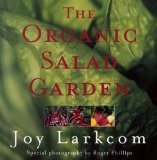
Miscellaneous Gardening Reminders for February
February can a difficult month in the garden, often very wet; it is often wiser to leave any sowing and planting until March.
However for those who wish to carry on regardless there is much that can be done.
- Surprise a friend or relative with a flower arrangement of something different (like red carnation, anthurium, tulip, or exotic protea) for
Valentine's Day, or give a subscriptionto Garden Notes!
- Check the roses in your Valentine's arrangement for "bent neck".
When your roses droop this way, it is best to pull them from the arrangement
and discard since recutting the stems will not perk them up again.
- As you travel this spring, consider visiting the National Arboretum in Washington, D.C. It is a research institution for the
improvement of plants through introduction, breeding, and selection. It not only conducts research on trees, shrubs, and herbaceous plants,
but also educates the public. It is part of the USDA and is open to the public free of charge.
- When purchasing cut roses, choose colors that are clear and sharp. Look for flowers with petals that are just starting to unfurl, and buds
that are springy to the touch. A rosebud that is too tight is known as a "bullhead" and will never open. The cause of bullheads is unknown.
- A jar of germinating grain is an old-time propagator's tool that is worth a try. After the grain has soaked for a day or two, dip the bases of
cuttings in the sprout water. The hormones produced by the sprouting seeds may stimulate rooting of the cuttings.
- To save time when the growing season is in full swing, sort seed packets by season now. Put each group (transplant, early, middle, late)
in its own box. In each box, group packets into early, middle and late subsections. When sowing time comes, there will be no time lost
searching for seed.
- Handle seed packets carefully. Rubbing the outside to determine how many seeds are inside can break the protective seed coats, thereby reducing germination.
- To beat the high cost of Valentine's Day floral decorations, try giving red gladiolus instead of roses. Glads should be reasonably
priced near February.
- Insecticidal soaps can cause browning of leaf margins and brown or yellow spots on leaves of some plants, especially if the plants are
stressed from repotting or transplanting. Some varieties of begonias, impatiens, geraniums, fuchsias, gardenias, and nasturtiums show
sensitivity to soap sprays. Test for sensitivity by treating a small part of the plant, then checking the plant several times over the next
two days. If a test plant wilts, rinse it off with water and do not use soap spray on that cultivar.
- Poor seed germination often results from planting in cold soil. Seeds presprouted between layers of moist paper towels may become
successfully established when dormant seeds fail. But presprouted seeds are fragile to handle. A planting gel can be made by suspending presprouted
seeds in a mixture of 1 tablespoon of cornstarch heated to a boilin 1 cup of water. When the mixture cools, put it in a plastic bag,
add presprouted seeds, and stir gently to distribute seeds evenly. Then cut a small hole in the bottom of the bag and squeeze the gel out along
the planting furrow. You have solved the problem of poor germination as well as plant spacing.
- Instead of buying a seed packet combination at a premium price, create a culinary theme garden yourself by carefully selecting
seeds for the cuisine you favor. For Oriental cooking, choose snow peas; green onions; daikon radish; Chinese cabbage; and long, thin eggplant.
For the French gourmet, include haricot vert green beans; courgette zucchini; mini-carrots; butterhead lettuce; and the herbs, chervil and French tarragon.
Indian cuisine needs shell peas, fiery peppers, and cumin.
- Research has shown that hydrophilic polyacrylamide gels, currently being marketed as aids to watering house plants, do not
absorb water as well when fertilizer solutions are used.
- If the soil dries out against a house under the eaves where rain rarely reaches, water well during a winter thaw to prevent loss
of plants. Remember that plants require water during the winter to replace water lost due to wind desiccation and lack of rain or snow.
- Pressed flowers collected last summer or pictures from your old garden catalogs can be used to add a romantic floral touch to
an old-fashioned valentine.
- To make old hay and manure weed-free, spread them on the soil in late winter, water well, and cover with black plastic. Weed seeds
will sprout after few days of warm weather, then will be killed by frost and lack of light.
- If you seek unusual glass vases for cut flowers, try test tubes and beakers, available from hospital supply stores and catalogs. They
come in a variety of shapes and sizes. Offering a full view of stems, they add a new dimension to flower arranging.
- The grain, triticale, is only about 100 years old. It is a cross between wheat and rye. This grain has a higher protein content
and better balance of amino acids than wheat. Triticale flour is already being used in some breads. It is best mixed
with wheat flour to make a pliable dough that rises well.
- For the serious grower using heat, there are many tasks that can be undertaken in the greenhouse, with the days growing longer, fuchsia and
geranium cuttings can be started off, early seeds can be sown in trays. But be warned this early production has its problems; seedlings and cuttings
will damp off (go rotten at the base of the stem) in certain weather conditions and must be sprayed with a suitable fungicide. Many people buy
part grown plug plants at this time of year, and to avoid damping off it is advisable to spread the plants out in your greenhouse so that fresh air can
circulate.
"In joy or sadness, flowers are our constant friends."
-- Kozuko Okakura

FREE Garden Journal!!
Join "Garden Notes" and plan for Harvest Success as you track and record your gardening progress.
Your Free Personal Garden Journal has pages for jotting down notes on the seeds you start,
your new plantings, when you fertilized, and even a graph to plot a new garden.

FREE Report
If you're interested in growing tomatoes, you've got to read this free report, because you're about to find out
3 age-old, tried and tested, organic tomato growing secrets that turn any tomato plant into a thriving source of the
juiciest, most
mouth-watering tomatoes you've ever tasted.
I didn't want to see another internet "eBook" on growing anything, but my husband signed up for Kacper's free report and I have to tell you, it is WELL worth the read. If you think you know everything about growing tomatoes, I challenge you to read Kacper's report. HIGHLY recommended!
Free Report Here

What's New?
Discover How To Easily Build An Attractive And Affordable Greenhouse That Will Grow Anything In Any Conditions… Also, building your own greenhouse just makes economical sense. You can build a greenhouse at just a fraction of the cost of buying a pre-built one. Most pre-built greenhouse you buy need to be assembled anyway, you’re really just paying hugely inflated prices for the material.
Click Here!
Book of the Month

Based entirely on organic gardening principles. This says it all. Joy's book has been fully revised and updated and includes extensive new reading, particularly
on oriental and fruiting vegetables, and did I mention, is now entirely based on organic gardening practices.
Read More...






